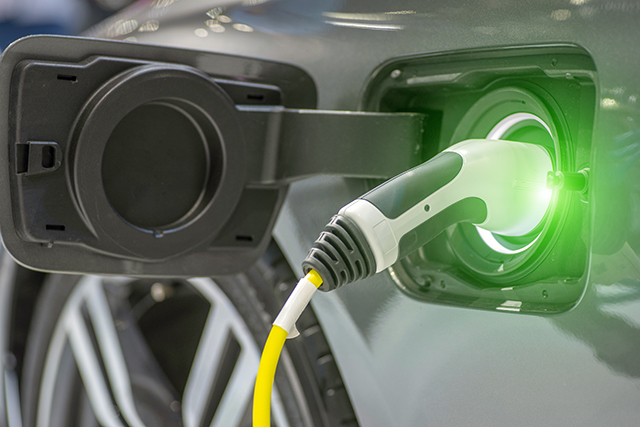People tend to lump all electric vehicles into one pile, but consumers may not realize different types of EVs have varying degrees of electrical dependence, including models that could appeal to those who are reluctant to go all-electric.
Despite efforts by state and federal governments to promote electric vehicle sales, many buyers remain hesitant to transition from traditional gas cars. According to AAA’s latest EV survey of drivers in the Northeast, range and charging infrastructure remain primary concerns.
AAA research has found that consumer interest in EVs lacks enthusiasm nationwide, however, 1 in 3 drivers would consider purchasing a hybrid.
Understanding EVs
Part of what keeps drivers from committing to an EV is simply not knowing their options, even when it comes to the basics. For example, it’s common for people to miscalculate how an EV will fit in with their personal driving habits.
“Most people drive fewer than 100 miles a day and almost every EV on the market today can cover their daily needs without stopping to charge,” said March Schieldrop, senior public affairs spokesperson for AAA Northeast. “When someone buys an EV, one of the big realizations is that they almost never rely on public charging and nearly all their charging occurs overnight at home.”
Range anxiety, or the fear of running out of battery charge, might be more of a concern for long trips, but even then, planning ahead can help.
Many are also unaware of the different types of EVs and how they operate. What is the difference between a battery electric vehicle and a hybrid? Or a hybrid versus a plug-in hybrid? And what do charging terms like Level 1, Level 2, Level 3 and supercharging mean?
Electric cars require a bit of homework, so we’ve compiled this explainer to help. You may still be on the fence now, but an EV could be in your future.
President Joe Biden signed an executive order in December 2021 for the U.S. government to end the purchases of gas-powered vehicles by 2035, but “mass adoption will take time,” said Schieldrop. “The average car on American roads is now more than 12 1/2 years old. Even if gas-powered cars are no longer sold in this country in 10 years, it will take decades for every car on the road to be an EV.”
Power/Current
Lithium-Ion Battery
The type of battery used in most EVs due to its high energy density and ability to be continually recharged.
Alternating Current (AC)
An electric current that continually changes direction. It is the standard electrical current in homes.
Direct Current (DC)
An electrical current that flows in one direction. It is the type of current that comes from a battery. When being charged by AC, EVs convert the power to DC to replenish their batteries.
Regenerative Braking
A system found in most EVs that captures the energy created by braking and transfers it to the car’s battery.
Different Types of EVs
Hybrid Electric Vehicle (HEV)
A type of car that uses both an internal combustion engine and an electric motor for improved fuel economy. Hybrids do not require an external charging source to charge. The gas engine generates enough electricity to charge the battery while driving and also gets a boost from regenerative braking.
Plug-In Hybrid Electric Vehicle (PHEV)
A hybrid that can also be charged externally. Plug-in hybrids get some of their charge from regenerative braking, but as the name suggests, can also be plugged into a power source. They can travel as far as 40 miles on electricity alone.
Battery Electric Vehicle (BEV)
A vehicle powered entirely by an externally charged electric battery.
Fuel Cell Electric Vehicles
Powered by hydrogen, these environmentally friendly cars produce no harmful emissions, just water vapor. They’re available in limited markets due to lack of infrastructure.
Zero Emissions Vehicle (ZEV)
A vehicle that emits no exhaust gas or other pollutants while in use, which inclues all of the above.

Charging
Level 1
The slowest form of charging, Level 1 is usually done at home using a standard 120-volt household outlet. Level 1 charging takes several hours to fully replenish an EV battery. Never use a Level 1 charger with an extension cord.
Level 2
Level 2 charging is significantly faster than Level 1, adding roughly 20 to 50 miles of range per hour. Level 2 chargers must be professionally installed for residential use. Most public charging stations are Level 2.
Level 3
Also known as DC fast charging, Level 3 is capable of high-power energy transfer that can replenish an EV battery to 80% in a half-hour.
Supercharger
Tesla’s proprietary EV charger can add up to 200 miles of range in as little as 15 minutes, according to the automaker. This fast-charging standard is called the North American Charging Standard (NACS). Tesla owns and operates a network of more than 35,000 superchargers across North America.
Bidirectional Charger
A converter that changes the car’s DC energy back into AC electricity so it can power something else, like appliances, another EV or even a house. This also requires a device to disconnect the house from the electrical grid so it can be connected to the vehicle.
Connectors
SAE J1772
Also known as a J plug or Type 1 plug, this five-pin connector is widely used in North America and supports both Level 1 and Level 2 AC charging.
CCS1
The CCS1, which stands for Combined Charging System Type 1, features a seven-pin configuration, integrating the SAE J1772 connector with two additional pins, allowing it to support both AC and DC charging.
CHAdeMO
This connector, which is used for DC fast charging, is found on models from Asian manufacturers.
NACS Adapters
Select EVs other than Teslas can connect to Superchargers using an NACS adapter. However, many major automakers, including Ford, General Motors, Nissan and Mercedes-Benz have recently adapted the fast-charging standard and will be transitioning all new EVS to come with built-in NACS charge ports.
To learn more, visit AAA’s EV website.














